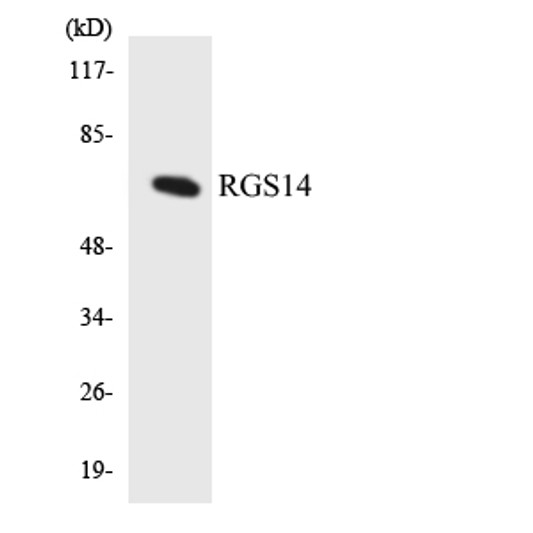| Function | Regulates G protein-coupled receptor signaling cascades. Inhibits signal transduction by increasing the GTPase activity of G protein alpha subunits, thereby driving them into their inactive GDP-bound form. Besides, modulates signal transduction via G protein alpha subunits by functioning as a GDP-dissociation inhibitor (GDI). Has GDI activity on G(i) alpha subunits GNAI1 and GNAI3, but not on GNAI2 and G(o)-alpha subunit GNAO1. Has GAP activity on GNAI0, GNAI2 and GNAI3. May act as a scaffold integrating G protein and Ras/Raf MAPkinase signaling pathways. Inhibits platelet-derived growth factor (PDGF)-stimulated ERK1/ERK2 phosphorylation.a process depending on its interaction with HRAS and that is reversed by G(i) alpha subunit GNAI1. Acts as a positive modulator of microtubule polymerisation and spindle organization through a G(i)-alpha-dependent mechanism. Plays a role in cell division. Required for the nerve growth factor (NGF)-mediated neurite outgrowth. Involved in stress resistance. May be involved in visual memory processing capacity and hippocampal-based learning and memory. |
| Protein Name | Regulator Of G-Protein Signaling 14Rgs14 |
| Database Links | Reactome: R-HSA-418594 |
| Cellular Localisation | NucleusPml BodyCytoplasmMembraneCell MembraneCytoskeletonMicrotubule Organizing CenterCentrosomeSpindleSpindle PoleCell ProjectionDendriteDendritic SpinePostsynaptic DensityAssociates With The Perinuclear Sheaths Of Microtubules (Mts) Surrounding The PronucleiPrior To Segregating To The Anastral Mitotic Apparatus And Subsequently The Barrel-Shaped Cytoplasmic Bridge Between The Nascent Nuclei Of The Emerging 2-Cell EmbryoLocalizes To A Perinuclear Compartment Near The Microtubule-Organizing Center (Mtoc)Expressed In The Nucleus During Interphase And Segregates To The Centrosomes And Astral Mts During MitosisRelocalizes To The Nucleus In Pml Nuclear Bodies In Response To Heat StressColocalizes With Ric8a In Ca2 Hippocampal NeuronsLocalizes To Spindle Poles During MetaphaseShuttles Between The Nucleus And Cytoplasm In A Crm1-Dependent MannerRecruited From The Cytosol To The Plasma Membrane By The Inactive Gdp-Bound Forms Of G(I) Alpha Subunits Gnai1 And Gnai3Recruited From The Cytosol To Membranes By The Active Gtp-Bound Form Of HrasColocalizes With G(I) Alpha Subunit Gnai1 And Ric8a At The Plasma MembraneColocalizes With Braf And Raf1 In Both The Cytoplasm And Membranes |
| Alternative Antibody Names | Anti-Regulator Of G-Protein Signaling 14 antibodyAnti-Rgs14 antibodyAnti-RGS14 antibody |
Information sourced from Uniprot.org










